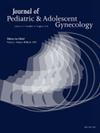8.2012-2024 年间得克萨斯州穆勒氏异常的地理空间分布:回顾性队列研究
IF 1.8
4区 医学
Q3 OBSTETRICS & GYNECOLOGY
引用次数: 0
摘要
Mullerian异常(MA)的病因学一直被认为是多因素的,但具体的影响因素尚不清楚。一些基因与某些MA相关,但没有基因可以解释所有的异常类型。环境污染物(EP)的作用,特别是可能的内分泌干扰物,已经被考虑,但迄今尚未探索。我们旨在了解任何MA患者的分布,以评估其与EP的接近程度。方法采用IRB批准的回顾性队列研究,在儿童和青少年妇科患者中进行(结果526例患者在Epic SlicerDicer初始人群分析后符合纳入/排除标准)。大多数患者为白人(78%),非西班牙裔和/或拉丁裔(57%)(表1)。34.6%的队列由复杂的缪勒管异常组成。根据人口普查区代码和异常类型绘制地理坐标在德克萨斯州地图上,直观地展示了MA分布。通过最优轮廓宽度对研究队列进行最佳拟合建模,揭示了43个不同的地理集群(图1)。在MA患病率最高的邮编中,有一个邮编靠近一个超级基金站点,这是EPA的高危险分类。由于OHVIRA和MRKH的发生率较高,聚类3和聚类4值得关注。在每个核电站群方圆10英里内的垃圾场,排放的主要化学物质包括已知的内分泌干扰物。结论本研究首次评估了穆勒管异常的地理空间分布及其与环境污染物的接近性。我们希望这些数据能为进一步阐明环境因素对MA的影响提供基础。本文章由计算机程序翻译,如有差异,请以英文原文为准。
8. Geospatial Distribution of Mullerian Anomalies in the State of Texas between 2012-2024: A Retrospective Cohort Study
Background
Etiology of Mullerian anomalies (MA) has long been considered multifactorial, but the specific contributing factors remain unclear. Some genes have been correlated to certain MA, but no genes explain all anomaly types. The role of environmental pollutants (EP), specifically possible endocrine disruptors, has been considered, but not explored to date. We aimed to understand distribution of patients with any MA to assess proximity to EP.
Methods
An IRB approved retrospective cohort study was conducted among Pediatric and Adolescent Gynecology patients (
Results
526 patients met inclusion/exclusion criteria following initial population analysis with Epic SlicerDicer. A majority of patients identified as White (78%), and non-Hispanic and/or Latino (57%) (Table 1). 34.6% of the cohort was comprised of complex mullerian anomalies. Geographic coordinates by census tract code and anomaly type were plotted on a Texas State map, visually demonstrating MA distribution. Best Fit modeling of study cohort by optimal silhouette width revealed 43 distinct geographic clusters (Figure 1). Among zipcodes with the highest MA prevalence, one was noted in close proximity to a superfund site which is a high hazard EPA classification. Clusters 3 and 4 were of interest due to higher rates of OHVIRA and MRKH. Among waste sites within a 10-mile radius to each cluster, top chemicals emitted included known endocrine disruptors.
Conclusions
This is the first study of its kind to assess geospatial distribution of mullerian anomalies and proximity to environmental pollutants. We hope that this data provides the groundwork to further elucidate impact of environmental factors on MA.
求助全文
通过发布文献求助,成功后即可免费获取论文全文。
去求助
来源期刊
CiteScore
3.90
自引率
11.10%
发文量
251
审稿时长
57 days
期刊介绍:
Journal of Pediatric and Adolescent Gynecology includes all aspects of clinical and basic science research in pediatric and adolescent gynecology. The Journal draws on expertise from a variety of disciplines including pediatrics, obstetrics and gynecology, reproduction and gynecology, reproductive and pediatric endocrinology, genetics, and molecular biology.
The Journal of Pediatric and Adolescent Gynecology features original studies, review articles, book and literature reviews, letters to the editor, and communications in brief. It is an essential resource for the libraries of OB/GYN specialists, as well as pediatricians and primary care physicians.

 求助内容:
求助内容: 应助结果提醒方式:
应助结果提醒方式:


